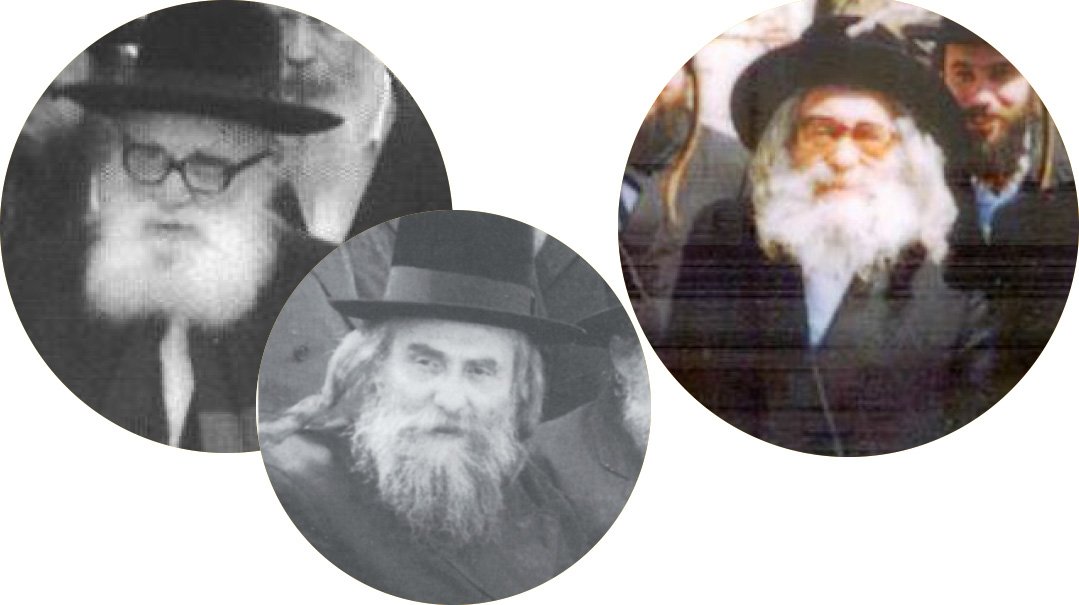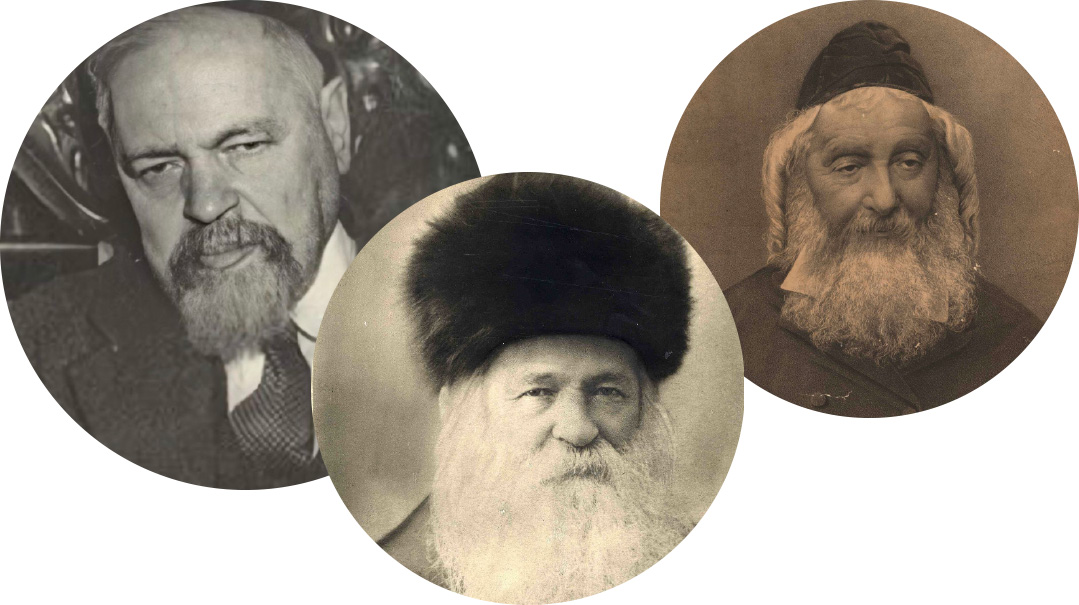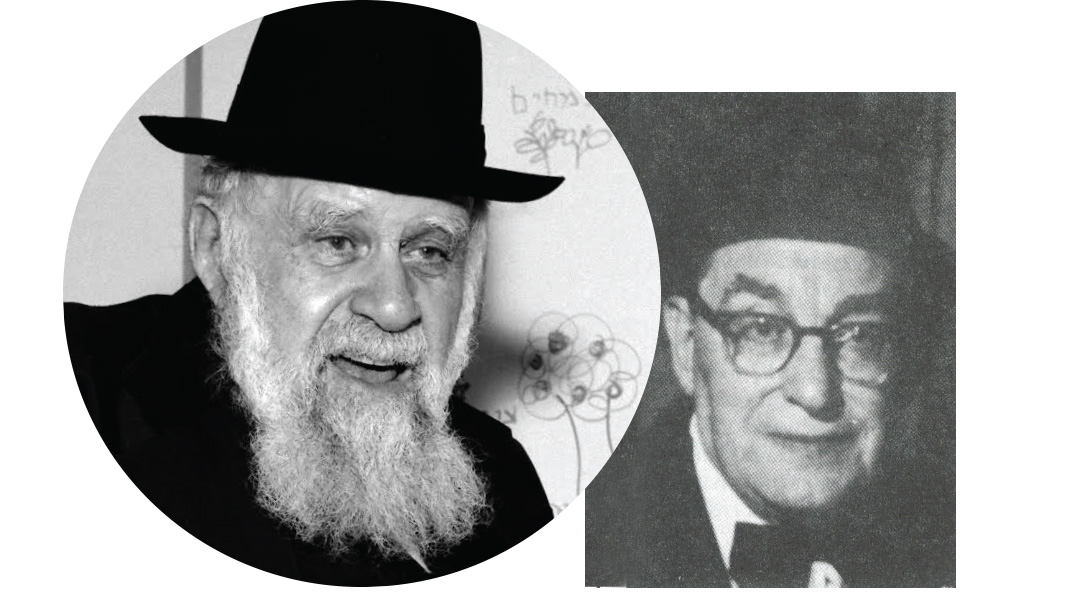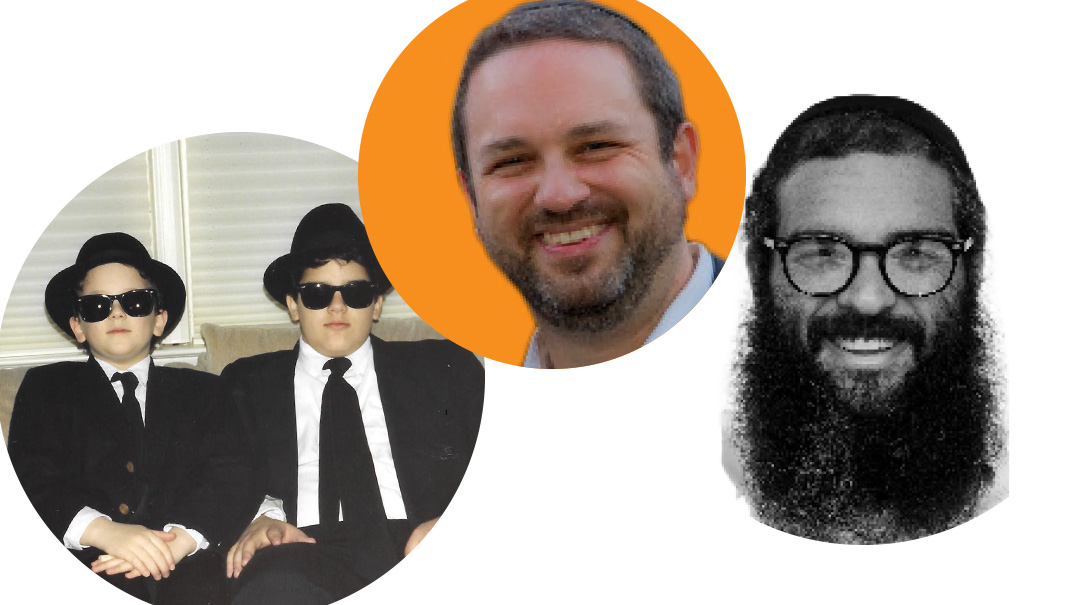Still Together
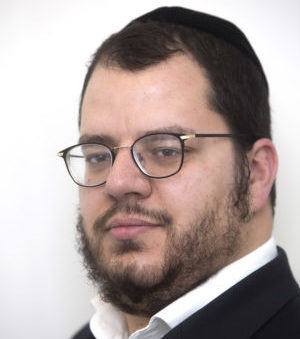
More than two decades after their father’s passing, the four sons of legendary MK Avraham Yosef “Munia” Schapira are still living his legacy
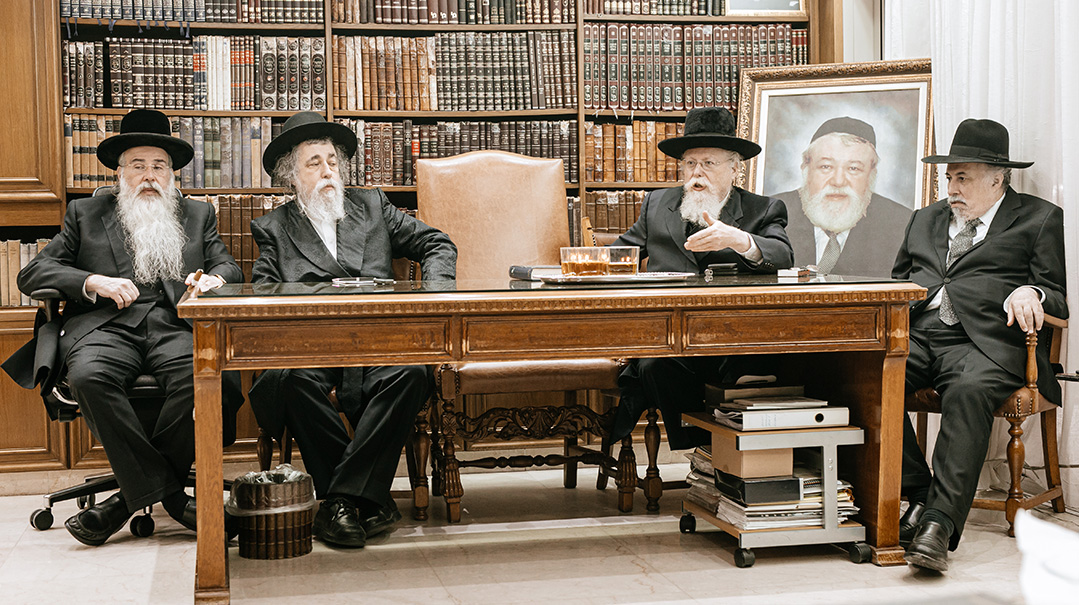
Photos: Mishpacha archives
If you pass by the house on 20 Stricker Street in northern Tel Aviv, you might mistake it for an embassy or some kind of international headquarters. Sleek luxury cars glide into the parking area, nattily-dressed security guards jump up and open doors to powerful VIPs, and there seems to be a constant flow of service providers and secretaries going in and out. That wouldn’t be so unusual for a luxury home of some powerbroker, but here, the master of the house has not been in This World for more than 20 years. Still, the house is humming. Business goes on. For his sons, it’s still the center of their world.
Agudah MK and business magnate Rabbi Avraham Yosef (Munia) Schapira a”h used to say that Tel Aviv, where he made his home, is the holiest city in Eretz Yisrael because it’s the only one without a church. And his best friend, neighbor, and mechutan, the Sadigura Rebbe ztz”l who passed away in 2013 (his daughter married Rabbi Munia’s son Rabbi Pinchas Schapira), insisted on keeping his court there so that the city shouldn’t become an ir nidachas (an idolatrous city slated to be destroyed).
It’s no wonder, then, that the palatial villa on Rechov Stricker 20 still serves as the central headquarters of the Schapira clan more than two decades after patriarch Rabbi Avraham Yosef passed away, and is where London-and-Swiss-based millionaire son Rabbi Yitzchak Yehudah (Isaac) Schapira stays during his frequent trips to Israel.
Few Israeli politicians were able to navigate the secular-religious divide with more skill and savvy than MK Schapira. His schmoozy, easygoing persona belied his political and financial acumen, and his large girth, perpetual cigar, and fly-away peyos escaping from under his yarmulke only added to his colorful image. Yet he was Agudah’s master tactician, having chaired the influential Knesset Finance Committee, headed the Bank of Israel advisory board, and is largely credited with pulling the country out of its economic morass in the early 1980s. His multi-million-dollar Carmel Carpets enterprise eventually floundered, but he recouped his losses in real estate and other holdings, which today are managed by his sons Pinchas and Elimelech in Israel, Shmuel in Vienna, and Yitzchak in London and Switzerland.
The magnificent seforim-lined walls with a built-in aron kodesh are still there, and so is Reb Munia’s leather chair — although none of his sons will ever actually sit in it. Even Shaul, the veteran gabbai and driver employed by Reb Munia decades ago, still runs the household. His hair is grayer, but he’s as loyal to his boss as he was before 23 Sivan, 2000, when Reb Munia was niftar. He still won’t share any of the secrets that took place here — not about the conversations with Rabin, the deals with Arik, the brokered coalition talks, or the meetings with mayors, tycoons, rebbes, and directors of Torah institutions. Instead, he makes sure to replenish the large jug of oil used to fill the continually-burning lights in honor of Reb Munia and his almanah, Tova Sheindel, who passed away in 2017. (Tova Sheindel Schapira was the daughter of the Cheshev Sofer, the last of the Sofer dynasty to serve as rav and rosh yeshivah in Pressburg, who came to Eretz Yisrael penniless yet made a fortune from some well-placed oil investments).
But the true heirs to Rabbi Schapira's legacy are his four sons, today grandfathers themselves. They all proudly carry the Schapira brand — in dress, speech, and conduct.
The four brothers are spread out between London, Zurich and Vienna, Tel Aviv and Caesarea, yet the house on Stricker Street remains a base for their business and philanthropic activities (two sisters live in New York).
The oldest son is Rabbi Pinchas Schapira, son-in-law of the Ikvei Abirim of Sadigura ztz”l, and the rav of Sadigura beis medrash in Tel Aviv.
The second is the renowned askan and philanthropist Rabbi Yitzchak Schapira of London, Zurich, and Jerusalem. A noted philanthropist with significant international political clout, Reb Yitzchak inherited his father’s negotiation finesse as well as his trademark fly-away peyos. But the chassidishe look didn’t impede his being a 2014 recipient of one of Queen Elizabeth’s highest honors, the Officer of the Most Excellent Order of the British Empire for “strengthening the ties between the UK and the chareidi community.” He is also known for his global efforts to save the burial sites of gedolim in Central and Eastern Europe, and was intimately involved behind the scenes in helping to free Sholom Mordechai Rubashkin.
The next son is Rabbi Elimelech Shraga Schapira, rosh kahal of Sadigura, and a noted author, historian, and family record-keeper; followed by Rabbi Shmuel Binyamin Schapira, who lives in Vienna, Austria, serving as the city’s rosh kahal. Each runs a financial empire of his own, but is also a partner in the family business. And each see their father as their inspiration.
Reb Pinchas speaks:
From the time my father headed the Knesset Finance Committee, the chareidi parties took a bad rap as being extortionists and only looking out for their own financial interests.
But really, he was so much broader than that. We’re descended from both Rav Pinchas of Koritz and Rav Levi Yitzchak of Berdichev. Rav Pinchas was known for his sharp mind and the Berdichever for his compassionate and loving heart, and our father got both. On one hand, he couldn’t tolerate the fact that a chareidi Jew in Israel had to be a shtadlan and to defend his causes like a poor man begging at the door. He wanted to advocate for religious causes in a professional fashion. “I don’t want to be an extortionist,” he would say. “I want to protect the interests of my constituents.”
On the other hand, he worked with great mesirus nefesh to dispel the animosity between the chareidi and secular public. And it was a challenge. He was a beis medrash Yid, and secular language was foreign to him. He had grown up under the Tchebiner Rav, and sat at the feet of the Damesek Eliezer of Vizhnitz and the Beis Yisrael of Gur, but he still made the effort to sit with distant people and to speak to them in a loving way. In fact, he never let us use the term “chilonim” because every Jew observes something, and he looked upon every Jew as holy.
Reb Elimelech shares:
There was one sentence that our father always said: “We have to remember that Mashiach hasn’t come yet.” The chareidi askan must remember that most of Israel’s population is not Torah observant, and his role requires delicate and skilled conduct.
Reb Shmuel Binyamin relates:
Our father was very pained by the polarization in Israel — it caused him no little heartache. He decided that he would go anywhere he was invited, even to secular kibbutzim, to meet the people and speak to their hearts. It wasn’t part of his job, but there was a deep internal sense of mission, of ahavas Yisrael. And he knew Hashem had endowed him with a certain koach.
I’ll never forget one Shabbos morning as we were walking together to the Sadigura shul on Pinkas Street, when on the way, we encountered a bit of an embarrassing scene: A mother ran after her son, caught up with him, and gave him a nasty beating. Usually, passersby just hurry on from such scenes because they’re so uncomfortable, but my father stopped. His Berdichever heart couldn’t take it. He went back to the mother, and within a few minutes he managed to resolve the conflict.
Reb Shmuel Binyamin explains:
In order to understand Tatte, you have to understand his deep Torah roots. He was first and foremost a lamdan. And I’m not even talking only about the years that he learned with mesirus nefesh during the Holocaust, in the yeshivah in Temeshvar in Romania. And not about the years when he learned under his rebbi, the Tchebiner Rav. As a bochur he was such an illui, that it was enough for him to meet with one of the members of the Sofer family to be suggested as a shidduch with the daughter of the Cheshev Sofer of Pressburg.
So how did it happen that the talmid muvhak of the Tchebiner Rav became the “manager of the country”? It began in the summer of 1981, when an unexpected phone call came. My father — who was an accomplished international businessman at that point — wasn’t even in the country, so I picked up the phone and heard someone introduce himself as “Alter from Yerushalayim.” It took me a few seconds to realize it was the Gerrer Rebbe, the Lev Simchah. I quickly called my brother Yitzchak, who had traveled with our father to London. From there, he was supposed to continue to New York, so I left a message at the British Airways counter in the airport that they should call back.
Reb Yitzchak recalls:
When we arrived, my father immediately called the Rebbe, who told Tatte that he was considering sending him to Knesset as a representative of the Central Faction of Agudas Yisrael. It was like a crazy joke. Tatte didn’t even consider it, and we continued on to New York.
But the Rebbe wouldn’t take no for an answer. “Tell your father he shouldn’t worry,” he told me. “It’s enough for him to invest one day a week — and on that day, he will get done what others do not do in an entire week.”
Reb Elimelech remembers:
He was the furthest thing from a political hack. He brought to the Knesset the work ethic from the business world. The first day he entered his office, he saw a bed there. All the MKs offices had a bed. He looked at it in shock and asked, “What’s this?” They explained to him that it was for the afternoon rest. He asked them to call the Knesset workers to take the bed out immediately. Instead, he asked for more chairs. He was coming to work, not to sleep. Another Agudah MK said to him, “Rabbi Avraham Yosef, rest for half an hour in the afternoon, you’ll get up like a new person. I do it also.” But Tatte wouldn’t hear of it.
Reb Pinchas comments:
Tatte began politics from zero. He was told about a meeting at the Agudah offices in Tel Aviv. He didn’t even know the address. He had no idea that Agudas Yisrael World Headquarters was located on Berdichevsky Street, a few blocks from his house.
My father was horrified by the fact that the entire Torah world’s allocation wasn’t even in the state budget. The fact that a chareidi Jew was an adjunct, who needed to plead and fight for every shekel each year anew, and the fact that the allocations were not professional and excluded many weaker sectors, rankled him. He was determined to change it. He paid out of pocket to bring in professionals to study the Knesset budget. He needed to know why the chareidi sector was excluded and discriminated against.
Reb Yitzchak remembers:
But perhaps the real story of Avraham Yosef Schapira and the Knesset was his uncanny ability to forge ties with MKs across the religious and political spectrum. Our father became the darling of Israeli politics. Everyone loved him. They came to his home, enjoyed listening to him, and dined at his table — and most importantly, acceded to most of his requests. Chareidi politics went from the era of budget begging to a position of influence.
We can sit here for days and nights and talk about his wisdom and political savvy — how he was able to pass budget, add classrooms, organize housing, obtain hundreds of apartments for rental, and even to include the budget for shemittah in Israel’s budget book — but that wasn’t really Tatte. I’ll tell you who he really was.
Once he was an MK, he was invited to visit Yeshivas Imrei Emes of Gur, his old alma mater. Everyone treated him with the greatest respect. But then he met Rav Shlomo Silberstein who said to him, “Rabbi Avraham Yosef, I still remember you in yeshivah. Come and give a shiur for the bochurim.”
Tatte had only one question: “Where are you up to?” And within a few minutes, he stood up and delivered a shiur for an hour and a half. That’s the way he was. On the one hand, he was friends with everyone, negotiating with Yidden who didn’t even know what the term meant. But in his essence, he was still in Koritz, Berdichev, and Pressburg.
Reb Pinchas shares:
If there was one issue that bothered Tatte deeply, it was the divide between Sephardim and Ashkenazim. A year before he passed away, there was a fine bas Yisrael who wasn’t accepted to a Bais Yaakov high school because of her Sephardic identity. Distraught, the girl’s father appealed to one of the rebbes, who then picked up the phone and called my father, who heard that the entire month of Elul the girl had not been in any school. She would come with her friends to the gate of the school, they’d go inside, and she would stand outside and say Tehillim. This story really depressed him. He called the principal, who was evasive: “There’s an acceptance committee, and I can’t bypass them….”
Three weeks passed. Succos came, and like every year, lots of ministers and VIP personalities came to visit Tatte. That principal also came, as did a senior minister. The principal — who had forgotten the incident — asked my father to exercise his influence with the minister. My father told him to join him in a private room, and then something really out of character happened: Tatte began to scream and shout. The walls shook. “Not only will I not help you, I will make sure that you don’t get any favors! Who does such a thing to a bas Yisrael?” The principal, of course, pledged to take care of the matter right away. But my father refused to help the school only after the girl was admitted to class.
Reb Shmuel Binyamin muses:
Tatte endured political caricatures and satire, but he didn’t let it wound him. Instead he’d say, “Kavod is something I want to get in the World of Truth. A person needs to know how to get through This World, to absorb all the spitting, and imagine to himself that it’s just rain.”
We don’t hold the positions he held, and we can’t aspire to the power and influence that he wielded. But we can remember his big heart and sharply drawn priorities, his focus on what’s truly important and the interpersonal skills he used to achieve it — and hope to make him proud.
(Originally featured in Mishpacha, Issue 854)
Oops! We could not locate your form.

